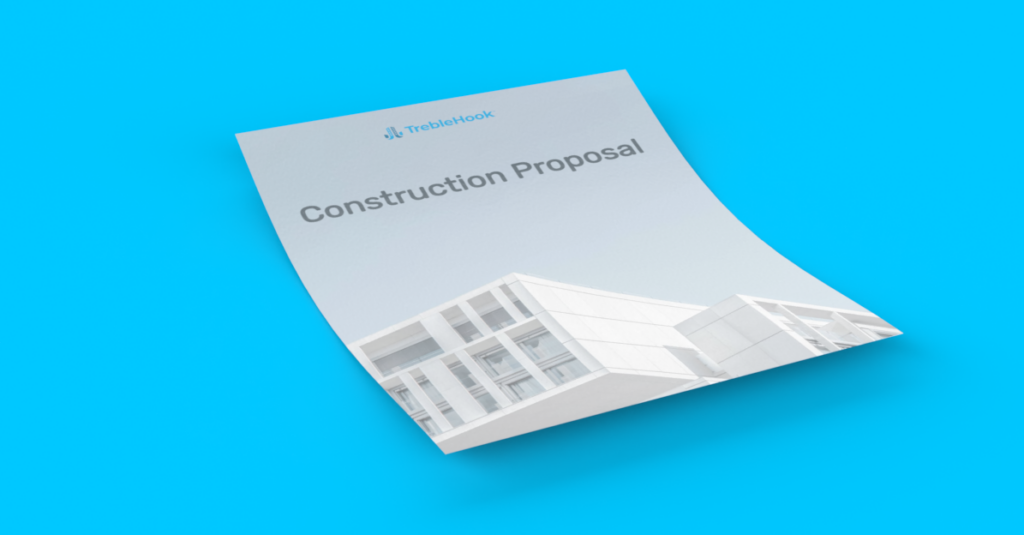Crafting winning AEC proposals is an essential skill for professionals in the Architecture, Engineering, and Construction (AEC) industry. It requires a combination of technical expertise, strategic thinking, and persuasive writing.
Your proposal must differentiate itself from competitors. It must effectively showcase your value proposition to the client. This applies to both new construction projects and engineering services contracts.
This blog post will provide eight tips for crafting compelling AEC proposals. The proposal should highlight your unique strengths and position your firm as the best choice for the job.
1. Understand the Client’s Needs
Understanding the client’s needs is essential for crafting winning AEC proposals. You must conduct thorough research, ask the right questions, and actively listen to their responses. Start by reviewing the Request for Proposal (RFP) or other project documentation to understand the client’s objectives, scope of work, and timeline.
Next, schedule a meeting with the client to discuss the project in more detail. Ask open-ended questions to better understand their priorities, challenges, and concerns. For example, you could ask questions like:
- What are your primary objectives for this project?
- What challenges are you currently facing that this project will address?
- What are the most important factors when selecting a vendor for this project?
Listen carefully to the client’s responses and take detailed notes. This information will tailor your proposal to the client’s needs and concerns.
Additionally, it’s important to research the client’s business and industry to understand their unique needs and challenges. This could include reviewing their website and marketing materials, conducting a SWOT analysis, and researching industry trends and best practices.

2. Crafting a Compelling Executive summary
Crafting a compelling executive summary is critical, as it’s often the first part of your proposal the client reads. To achieve this, provide a concise overview and highlight the key benefits and value proposition. Distill the most important elements into key points such as project objectives, scope, timeline, and budget, and focus on critical details since the summary should be no more than one or two pages. Use active language and avoid jargon, focusing on the client’s needs and priorities.
Clearly articulate how your solution addresses their challenges and provides value to their business, using examples and case studies to showcase your expertise and success in similar projects. Ensure your executive summary is visually appealing and easy to read, using headings, bullet points, and graphics to break up large blocks of text.
By following these tips, you can create a compelling summary that captures the client’s attention and sets the stage for a successful proposal.
3. Highlighting Your Firm’s Experience and Expertise
Highlighting your firm’s experience and expertise is essential for a winning AEC proposal. To do this, review past projects and focus on the most relevant ones. Clearly articulate your role and highlight achievements using data and metrics. Also, showcase your firm’s unique strengths and capabilities, such as specialized skills or innovative technology.
Use various methods, such as case studies, project profiles, and team bios, to effectively communicate your experience and expertise. Tailor your messaging to the client’s specific needs and priorities, and use visually appealing formatting tools. Doing this lets you demonstrate your value proposition and position your firm as the best choice for the job.
4. Emphasizing Your Unique Selling Proposition
Emphasizing your unique selling proposition is essential to creating winning proposals. A strong USP can help you stand out and make a compelling case for why the client should choose your firm.
Start by identifying what sets your firm apart from other AEC firms. Consider factors such as your breadth of experience, specialization in certain areas, use of innovative technology, commitment to sustainability, or a focus on customer service.
Once you’ve identified your unique strengths, you must ensure they are communicated in your proposal. Focus on the benefits your unique capabilities bring to the project and how they will help the client achieve their desired outcomes. Use data and metrics to support your claims, such as on-time and on-budget delivery or client satisfaction ratings.
Finally, make sure your USP is visually appealing and easy to read. Use headings, bullet points, and other formatting tools to break up large blocks of text and make the document more scannable. Consider adding graphics or photos to illustrate your unique capabilities and make your proposal stand out.
By emphasizing your unique selling proposition, you can differentiate yourself from the competition and demonstrate why your firm is the best choice for the project.
5. Developing A Comprehensive Scope of Work
Developing a comprehensive scope of work is vital to writing AEC proposals. A successful proposal should clearly articulate the project requirements, timeline, and deliverables so that everyone involved understands their respective roles and responsibilities.
Start by defining the scope of work for each project phase in detail. Be sure to include specific requirements or regulations from the client, such as safety protocols or materials standards. This section should also include a timeline for each project phase, outlining when tasks must be completed, and milestones reached.
Finally, ensure all elements of your scope of work are well-documented in the proposal. Use clear headings, bullet points, and other formatting tools to break up large blocks of text and make the document more scannable. Ensure accuracy by proofreading your proposal several times before submitting it to the client.
By developing a comprehensive scope of work, you can provide the client with an accurate overview of the AEC project requirements and demonstrate that you understand their needs. This will help strengthen your proposal and give the client confidence that you have the expertise to deliver on time and within budget.
6. Providing A Detailed Pricing Proposal
A well-written AEC proposal should include a detailed pricing proposal outlining all of the project’s costs. This should include both fixed and variable costs, as well as any third-party service or materials fees.
Start by developing an itemized list of all costs associated with the AEC project, including labor, materials, and other expenses. Make sure all costs are accurate and up-to-date, as any errors in pricing could lead to costly delays or misunderstandings down the road.
Include an overall project cost estimate at the end of your pricing section so the client understands what they can expect to pay for your services. Be sure to note any discounts or payment plans your firm offers, as this could be a deciding factor for some clients.
By providing a comprehensive and accurate pricing proposal, you can help the client make an informed decision about your AEC services and build trust in your firm’s capabilities.
7. Using Visuals to Enhance the Proposal
Using visuals to enhance AEC proposals can help make the document more engaging and easier to understand. A well-designed proposal should incorporate a variety of visuals, including diagrams, charts, photos, and illustrations that highlight key points or showcase your firm’s experience and expertise.
Visuals are also useful for differentiating yourself from the competition. Consider adding graphics or photos to illustrate your unique capabilities and make your proposal stand out. A well-crafted visual can be more effective than a long block of text, so use this tactic to emphasize the key points in your proposal.
By incorporating visuals into your proposals, you can showcase your firm’s strengths and create a more engaging document that stands out from the competition.
8. Ensuring Accuracy and Professionalism
Finally, AEC proposals should be thoroughly proofread and checked for accuracy before submitting them to the client. Double-check all information to make sure everything is up-to-date and accurate. Also, ensure that any visuals included in your proposal are high quality and reflect positively on your firm.
It’s also important to make sure your proposal is presented professionally. A well-crafted AEC proposal should be free of typos, spelling errors, and grammatical mistakes. Use a consistent font throughout the document and utilize headers to break up large blocks of text.
By ensuring accuracy and professionalism in your AEC proposals, you can give the client confidence in your AEC services and increase the chances that your proposal will stand out from the competition.
Set Your Proposals Apart
To create successful AEC proposals, it’s important to understand the client’s needs, create an executive summary, highlight experience and expertise, emphasize a unique selling proposition, develop a comprehensive scope of work, provide a detailed pricing proposal, utilize visuals, and ensure accuracy and professionalism. Doing so will set the proposal apart from the competition and make a positive impression.
